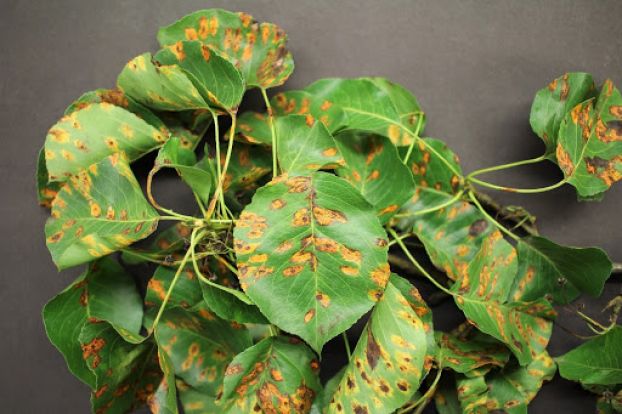Arbor-wellness: Pear Rust
My Pear tree is losing leaves right now and I notice these yellow/orange spots on the leaves and twigs too?
That is most likely a disease called pear trellis rust. It is one of several leaf diseases found on pear trees specifically. It can be a serious problem if not treated. The first step is to remove the fallen leaves and twig because the spores found in those help to spread it.
Is this a serious problem? It seems to be getting worse each year?
Pear trellis rust can be a serious disease and it often will impact the health and survival of pear trees. Stunted growth, thinning in the canopy, and branch dieback will occur after several consecutive years of infection. In areas where the disease is prolific, it can eventually cause death of the pear host. Though juniper plants are part of the disease cycle, they are not normally harmed by the disease.
How does it form?
One unique thing about most rust diseases is that they require a second type of host plant in order to successfully establish and reproduce. Without the second host you won’t have the disease on the desired plant. In this case the secondary host is juniper plants. Junipers planted within 1,000 feet are probably acting as the second host. Spores produced from the gall-like infections on the junipers travel to the pear trees in early spring by wind and rain. They infect new leaves as they emerge on the tree. In late summer, fruiting bodies emerge on the underside of leaves and on twigs, which then transfer the disease back to junipers.
Do I have to remove my junipers?
That is the easiest way to control this disease on Pear trees. Remember though that if neighboring properties also have junipers, these plants may also be an alternate host if they are planted close enough. Another option is to replace your existing junipers with a variety of juniper that is resistant to the disease. These include – AmiDak, Bar Harbor, Blue carpet, Blue star, Winton’s Carpet and Juniperus communis ‘Aurea’ and J. communis ‘Compressa’ .
Can I keep my existing junipers and still control this problem on my Pear trees?
There are management techniques which involve timely treatments of the pear trees in the spring, usually more than once each season. Supplemental system treatment in the fall helps to prevent the disease as well. You can also prune out the galls on the junipers in early spring (Before April 1st), but they are hard to find and don’t look anything like the disease when you see it on Pear trees.
If you are concerned about Pear trellis rust on your pear trees, contact you Arborwell arborist who can evaluate the trees and recommend a program for them.
Fill out the form below to set up a site inspection.
